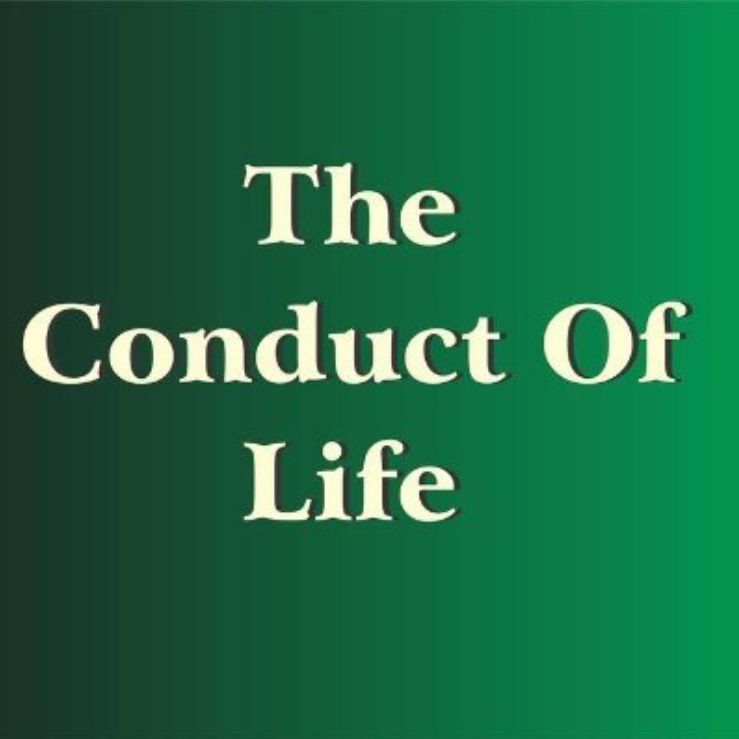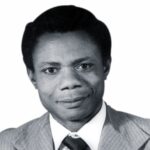Last updated on April 4th, 2025 at 06:03 am
Power dynamics can be seen in a wide range of social settings where some individuals or groups hold more power than others as a result of many factors detailed in this article.
The factors could be a result of wealth, social status, political influence, or access to resources.
Power plays are present anywhere people and society interact, from interpersonal relationships to larger social structures such as governments or corporations.
It can be either visible or invisible, depending on the context you are looking at.
For example, in a workplace, power distribution may be visible in the form of hierarchies and formal structures of authority, while in a social group, it may be more subtle and based on social norms and expectations.
In this article, we are going to examine the dynamics of power inside-out and how it can be managed for a harmonious society.
Definition of Power Dynamics
Power play is important in any interpersonal interaction or relationship and any imbalance can result in bitterness and unhealthy relationships.
Power dynamics refers to the ways in which power is distributed and exercised among individuals, groups, and institutions in a given society or context.
It involves understanding the relationships between those who hold power and those who do not, and how power is used to influence others, make decisions, and control resources.
Related: Why Democratic Leadership Style Is Key To Team Empowerment
It can be based on a variety of factors such as wealth, social status, political influence, or access to resources.
When you understand power distribution and balance, you can create or promote a more equitable and just society that involves challenging systems of oppression and working towards creating more inclusive and democratic systems of power.
Importance of Understanding Power Dynamics
A lack of understanding of power plays has resulted in bickering and even death in our societies. People cry out for marginalization and non-inclusiveness because they feel so.
Ignoring these calls has always led to more serious problems which affect the peaceful co-existence of the parties or the performance of an organization.
Here is the importance of understanding the dynamics of power:
- Identifying and challenging systems of oppression: Power plays can be used to maintain systems of oppression, such as racism, sexism, and classism. By understanding these dynamics, individuals, and groups can identify and challenge these systems, working towards creating a more just and equitable society.
- Promoting inclusivity and diversity: Understanding the dynamics of power can help individuals and groups recognize the importance of diversity and inclusivity in society. By recognizing the ways in which power is distributed and exercised, individuals and groups can work towards creating more inclusive and diverse communities.
Related; Developing Positional Power For Organizational Impact
- Empowering marginalized groups: It often results in certain groups being marginalized or excluded from decision-making processes. By understanding these dynamics, marginalized groups can work towards reclaiming their power and advocating for their rights.
- Fostering democratic processes: Understanding how power works in society is essential for creating democratic processes. By recognizing the importance of power-sharing and collaboration, individuals and groups can work towards creating more democratic and participatory systems of governance.
Types of Power Dynamics

There are several types of power plays depending on the context, but we are going to concentrate on these overarching three:
1. Personal Power Dynamics
Personal power dynamics refers to the ways in which power is distributed and exercised in personal relationships, such as between family members, friends, or romantic partners.
When you exert power over your siblings, children, or spouse, you are demonstrating personal power plays.
These dynamics can be based on a variety of factors, such as personality traits, social status, or emotional intelligence.
Examples of personal power dynamics
- Dominance and submission: One person may assert dominance over another, leading to a power imbalance in the relationship. This can manifest in different ways, such as one partner controlling the other’s behavior or decision-making.
- Emotional manipulation: One person may use emotional manipulation to control the other, such as by guilt-tripping or gaslighting them.
- Social status: Power games can also be based on social status, such as one partner being wealthier or more educated than the other.
- Personality traits: Certain personality traits, such as confidence or assertiveness, can give one person more power in a relationship.
- Communication skills: Those with better communication skills may be able to assert their power more effectively in a relationship.
- Physical strength: In some cases, physical strength can give one person more power in a relationship.
- Gender roles: Power struggles can also be influenced by traditional gender roles, such as men being expected to be the dominant partner in a relationship.
Related: Referent Power: Master The Invisible Power Of Personality
2. Social Power Dynamics

Social power plays is demonstrated in ways in which power is distributed and exercised within larger social structures, such as institutions, organizations, and communities.
These dynamics can be based on a variety of factors, such as social status, wealth, race, gender, and political influence.
Examples of social power dynamics
- Economic power: Wealthy individuals and corporations may have more power in society due to their ability to control resources and influence economic policy.
- Political power: Politicians and government officials may have power over others due to their ability to make decisions that affect the lives of citizens.
- Social status: Those with higher social status, such as celebrities or members of the upper class, may have more power in society due to their perceived influence and prestige.
- Race and ethnicity: Racial and ethnic minorities may face power imbalances due to systemic racism and discrimination.
- Gender: Women may face power imbalances in society due to gender-based discrimination and sexism.
- Education: Those with higher levels of education may have more power in society due to their specialized knowledge and skills.
- Religion: Religious institutions and leaders may have power over their followers due to their perceived moral authority.2. Examples
Related: Personal Power: How To Unleash Your Inner Strength
3. Organizational Power Dynamics

Organizational power play is exercised when power is distributed within formal organizations, such as businesses, governments, and non-profit organizations.
These dynamics can be based on a variety of factors, such as hierarchical structures, job titles, and access to resources.
Examples of Organizational Power Dynamics
- Hierarchical structures: Organizations often have hierarchical structures, with those at the top having more power and authority than those at the bottom. This can manifest in different ways, such as higher salaries, greater decision-making power, and more opportunities for advancement.
- Job titles: Certain job titles may come with more power and influence than others. For example, a CEO may have more power than a middle manager, due to their greater authority and responsibility.
- Access to resources: Those with access to resources, such as funding or technology, may have more power within an organization.
- Social networks: Those with strong social networks within an organization may have more power and influence, due to their ability to build relationships and influence decision-making.
- Expertise: Those with specialized knowledge or expertise may have more power within an organization, due to their ability to provide valuable insights and solutions.
- Organizational culture: The culture of an organization can also influence power dynamics, such as by promoting collaboration and shared decision-making or by fostering a competitive and individualistic environment.
Related: The Use And Abuse Of Coercive Power: A Close Look
Factors Influencing Power Dynamics
The dynamics of power are influenced by a wide range of factors, including individual characteristics, social structures, and cultural norms.
Here are key factors:
1. Social Identity Theory
Social identity theory is a psychological theory that explains how individuals form their social identities and how these identities influence their behavior and attitudes towards others.
According to this theory, individuals tend to identify with certain social groups, such as race, gender, ethnicity, religion, or nationality, and use these group memberships to define their sense of self.
Social identity theory can influence power dynamics by creating in-group/out-group distinctions that lead to power imbalances where some individuals have more privileges than others.
When individuals identify with a particular social group, they tend to view members of their own group as similar and favorable, while viewing members of other groups as either less superior or less favorable.
This can lead to the formation of stereotypes and prejudices that contribute to power imbalances and discrimination.
For example, if a society or an organization has a hierarchy that favours a certain social group, such as men or a particular profession, the members of that group may be more likely to hold power, privileges, and influence.
This can lead to systemic discrimination and marginalization of other groups, such as people of other professions, or women.
2. Social Dominance Theory
Social dominance theory is a social psychological theory that explains how power dynamics are maintained and reinforced within societies.
According to this theory, societies are structured in a way that creates hierarchies of social groups, with some groups holding more power and privilege than others.
This leads to the perpetuation of power imbalances and the marginalization of certain groups.
Social Dominance Theory can influence power dynamics by explaining how individuals and groups maintain and reinforce these power structures.
It suggests that individuals and groups who hold power are motivated to maintain their power and dominance over others, often through the use of force, coercion, or persuasion.
This can lead to the perpetuation of systems of oppression and discrimination.
Related: Expert Power: Strategies For Building Credibility And Influence
For example, if a society is structured in a way that favours a certain social group, such as men or older people, the people who are close to that group may be more likely to hold power and influence.
They may use their power to maintain the status quo and resist efforts to challenge the power structures that benefit them.
Social dominance theory can also influence power dynamics within organizations and institutions.
Those who hold power within these structures may use their power to maintain their dominance over others and resist efforts to challenge their power.
3. Intersectionality
Intersectionality is a concept that explains how different social identities and experiences intersect and interact with each other, creating complex and unique experiences that cannot be understood by looking at a single identity or factor alone.
Intersectionality can play a significant role in power dynamics by highlighting how power imbalances are shaped by multiple factors, such as race, gender, sexuality, class, ability, and other social identities.
Intersectionality can influence power dynamics by highlighting how individuals who hold multiple marginalized identities may experience greater levels of oppression and discrimination than those who only hold one marginalized identity.
For example, a Black woman may experience discrimination that is different from that experienced by a Black man or a White woman, due to the intersection of race and gender.
Intersectionality can also influence power dynamics by highlighting how individuals who hold privileged identities in some contexts may also hold marginalized identities in others.
For example, a wealthy white woman may hold privilege in terms of race and class, but may also experience marginalization in terms of gender.
Understanding intersectionality is important for creating more equitable and just societies.
Effects of Power Dynamics
While it can often have negative effects, there are also positive effects that can arise from the workings of power in certain contexts. Here are examples:
Positive Effects
Improved Communication
Improved communication can be a positive effect on power sharing in certain contexts.
When power is distributed more equally among individuals or groups, it can lead to more open and transparent communication, as individuals feel more comfortable expressing their opinions and ideas.
For example, in a workplace where power is evenly distributed among managers and subordinates, there may be more opportunities for inclusiveness and teamwork, as employees feel empowered to share their ideas and contribute to decision-making processes.
This can lead to more competence, happy employees a more positive work environment.
Similarly, in political contexts where power is shared among different groups or factions, there may be more opportunities for dialogue and negotiation, as each group has a stake in the decision-making process. This can lead to more effective policy-making and a more inclusive political system.
Increased Collaboration
Increased collaboration can be a positive effect of power dynamics in certain contexts.
When power is distributed more equally among individuals or groups, it can lead to more opportunities for collaboration and teamwork.
For example, in a workplace where power is shared among employees and managers, there may be more opportunities for collaboration on projects and initiatives.
Related: Transformational Leadership Style: Inspiring Change from Within
This can lead to more innovative solutions, increased productivity, and a more positive work environment.
Also, if this is applied in a political setting, there may be more opportunities for collaboration in policy-making and decision-making processes.
This can lead to more effective policy-making and a more inclusive political system.
Better Decision-making
Better decision-making can be a positive effect of power dynamics in certain contexts.
When power distribution is even among the players, it can lead to more inclusive decision-making processes that take into account a wider range of perspectives and ideas.
For instance, in a setting where everyone has a say and can be heard without discrimination or profiling, there will be more chances for inclusiveness and collaborative efforts which can lead to better performance.
Negative Effects
Abuse of Power
Abuse of power is a negative effect of power dynamics that can occur in contexts where a few individuals or groups hold power.
Abuse of power occurs when those who hold power use it to exploit or harm others, often without accountability or consequences.
For example, in an organization where power is concentrated in the hands of a few managers or executives, there may be opportunities for abuse of power, such as bullying, harassment, or discrimination.
This can lead to a toxic work environment and harm to employees’ mental and physical health.
Also, another example is in a political situation where power is rest in the hands of a few persons, there may be temptations for abuse of power, such as corruption, human rights abuses, or authoritarianism.
This can lead to a lack of accountability and transparency and harm to the well-being and rights of citizens.
Discrimination
Discrimination is a negative effect of power dynamics that can occur in contexts where power is not evenly distributed.
The few people holding power can use it to discriminate, and scheme people out.
Discrimination occurs when people or groups are treated unfairly or unfavorably based on their social identities, such as race, gender, sexuality, religion, or nationality.
This is possible in a working environment where a few wield power to the disadvantage of others who are helpless.
In this context, there may be chances of marginalization, such as unequal pay, hiring practices that favor certain groups, or lack of accommodations for employees with disabilities.
This can lead to a toxic work environment and harm to employees’ mental and physical health.
It is also possible in a political environment where a few people are exposed to power which could lead to more discrimination and policies that target a particular group.
This can lead to a lack of social mobility and harm to the well-being and rights of citizens.
Inequality
Inequality is a negative effect of power dynamics that can occur in contexts where power is concentrated in the hands of a few individuals or groups.
Inequality refers to the unequal distribution of resources, opportunities, and benefits among people, often based on social identities such as race, gender, class, or nationality.
For example, there may be significant economic inequality where a few people are in control.
This gives rise to a lack of social mobility and opportunities for those who are not part of the wealthy elite.
Also, in a work environment where executives wield more power, inequality might result in people’s voices not being heard, and lack of pay benefits, and a lack of opportunities for advancement.
This can result in a lack of motivation and enthusiasm among employees who feel that they do not have equal opportunities for success and advancement.
Related: Personal Power: How To Unleash Your Inner Strength
More Power Dynamics Examples
Here are some examples of power dynamics:
- Employer-employee relationship: In a workplace, the employer holds more power than the employee due to their ability to hire, fire, promote, or discipline the employee. This power dynamic can sometimes be exploited by the employer, leading to issues such as unequal pay, discrimination, or harassment.
- Parent-child relationship: Parents hold more power than their children due to their authority over them. This power dynamic can sometimes lead to issues such as overbearing control, neglect, or abuse.
- Gender-based power dynamics: In many societies, men hold more power than women due to cultural, social, and economic factors. This power dynamic can lead to issues such as gender-based violence, discrimination, and inequality.
- Political power dynamics: In a political system, those in power hold more influence and decision-making authority than those who are not. This power dynamic can sometimes lead to issues such as corruption, exploitation, or abuse of power.
- Social class power dynamics: In a society with a class system, those in higher social classes hold more power and privilege than those in lower classes. This power dynamic can lead to issues such as income inequality, lack of access to resources, and social exclusion.
Related: Reward Power: The Art Of Using Rewards For Motivation
The Need for Power Balance
Power balances will promote equity, peaceful cohabitation, and happy subordinates. Here are reasons why power balance should be promoted and achieved in any setting:
- Preventing abuse of power: Too much power concentrated in a few individuals or institutions can lead to abuse of power, including corruption, nepotism, and bias.
- Promoting fairness and equality: A balanced distribution of power ensures that everyone in society has access to equal opportunities and resources. This helps to minimize social and economic disparities and promotes fairness and equality.
- Fostering stability and peace: In a society where power is balanced, there is less likelihood of instability and conflict between different groups, which helps to promote peace.
- Encouraging greater participation and representation: When power is balanced, it allows for greater participation and representation of various groups in society, including those who have traditionally been marginalized or excluded.
Tips for Managing Power Dynamics
Managing power dynamics can be possible when the following are taken into consideration:
1. Recognize power imbalances
Recognizing power imbalances is a key tip for managing power mechanics.
Power imbalances can arise in any situation where there is a concentration of power in the hands of a few individuals or groups, and they can lead to harm and injustice if not addressed.
Recognizing power imbalances involves being aware of the ways in which power is distributed and the impact that power dynamics can have on individuals and groups.
It involves acknowledging the ways in which some individuals or groups may have more power or privilege than others and being willing to challenge these power imbalances in order to create more equitable and just systems of power.
Here are some tips for recognizing power imbalances:
- Pay attention to who is making decisions and who is being affected by those decisions. Are certain groups excluded from decision-making processes? Are certain groups disproportionately affected by the outcomes of those decisions?
- Listen to the perspectives and experiences of individuals and groups who may be marginalized or underrepresented. Are their voices being heard and valued? Are they being given equal opportunities to participate and contribute to discussions and decision-making processes?
- Be aware of the ways in which power and privilege can shape your own perspectives and experiences. Are you unconsciously perpetuating power imbalances through your own actions and behaviors?
- Educate yourself about the ways in which power mechanics can impact individuals and groups, and be willing to challenge systems of power that perpetuate inequality and discrimination.
Related: What Is Information Power? Benefits, Misuse And Challenges
Promote open communication
Promoting open communication is a key tip for managing power play.
Open communication can help to reduce power imbalances by creating a more inclusive and collaborative environment where all individuals and groups have the opportunity to contribute their ideas and perspectives.
Here are some tips for fostering open communication:
- Create a safe and inclusive environment where individuals feel comfortable sharing their perspectives and ideas. This can involve promoting a culture of respect and inclusivity and providing opportunities for individuals to share their thoughts and feelings without fear of judgment or retaliation.
- Encourage active listening and dialogue among individuals and groups. This can involve promoting a culture of openness and curiosity and being willing to listen to and learn from others’ perspectives and experiences.
- Be transparent and honest in your communication. This can involve being clear and direct in your communication and being willing to share information and feedback openly and honestly.
- Be willing to challenge power imbalances in your communication. This can involve speaking up when you see power imbalances occurring and being willing to challenge systems of power that perpetuate inequality and discrimination.
Related: What Is Information Power? Benefits, Misuse And Challenges
Encourage collaboration
Encouraging collaboration is a key tip for managing power dynamics in any context.
Collaboration can help to reduce power imbalances by creating a more inclusive and cooperative environment where all individuals and groups have the opportunity to contribute their ideas and perspectives.
Here are some tips for encouraging collaboration:
- Create opportunities for individuals and groups to work together on projects and initiatives. This can involve promoting a culture of teamwork and cooperation and providing opportunities for individuals to collaborate across different departments or areas of expertise.
- Encourage diverse perspectives and ideas in your collaborations. This can involve promoting a culture of inclusivity and diversity and being willing to listen to and learn from others’ perspectives and experiences.
- Be willing to share power and decision-making authority in your collaborations. This can involve promoting a culture of shared leadership and collective decision-making and being willing to give up some of your own power and influence in order to create a more equitable and just system of power.
- Be bold enough to question power discrepancies which involves speaking up against systems of power that perpetuate inequality and discrimination.
Also Read: The Dark Side Of Sense Of Agency And How To Strike A Balance
Address discrimination and inequality
Addressing discrimination and inequality is a key tip for managing power influence in any context.
Discrimination and inequality can arise when a few people make decisions without the perspective of others which can lead to injustice if overlooked.
Here are some tips for addressing discrimination and inequality:
- Recognize and acknowledge the existence of discrimination and inequality. This can involve educating yourself about the ways in which power play can impact individuals and groups and being willing to challenge systems of power that perpetuate inequality and discrimination.
- Promote inclusivity and diversity in your workplace or community. This can involve creating a safe and inclusive environment where individuals feel comfortable sharing their perspectives and ideas, and providing opportunities for individuals from diverse backgrounds to participate and contribute.
- Address discriminatory practices and policies. This can involve challenging policies or practices that perpetuate discrimination or inequality, and advocating for changes that promote inclusivity and diversity.
- Empower marginalized groups to advocate for their rights and challenge discriminatory practices. This can involve providing resources and support to individuals and groups who are marginalized or underrepresented and promoting a culture of respect and equality.
Related: Developing Positional Power For Organizational Impact
Power Dynamics in History
Monarchical rule
This refers to the period in history when a single monarch or king/queen held all the power. Some famous examples include:
- Julius Caesar: Ruled Rome from 27 BCE until his assassination in 44 BCE. He was declared “dictator for life” in 44 BCE, effectively ending the Roman Republic and establishing himself as the sole ruler of Rome.
- Queen Elizabeth I: Ruled England and Ireland from 1558 until her death in 1603. She was known for her strong leadership and savvy political maneuvering and oversaw a period of English expansion and cultural flourishing.
Feudalism
This refers to the medieval system of government in which lords granted land to vassals in exchange for military service and loyalty. Some notable feudal rulers include:
- William the Conqueror: Conquered England in 1066 and established a feudal system there. He granted land to his Norman followers in exchange for their fealty and military service.
- Charlemagne: Ruled the Frankish Empire from 768 to 814. He expanded his territory through military conquest and established a system of feudalism throughout his empire.
Colonialism
This refers to the period in history when European powers established colonies in other parts of the world and exerted their control over those territories. Some key players in this era include:
- Christopher Columbus: Sailed to the Americas in 1492 on behalf of the Spanish crown. His voyages opened up the New World to European colonization.
- British East India Company: Established in 1600, this company had a monopoly on British trade with India and other parts of Asia. It effectively governed much of India until the Indian Rebellion of 1857.
Industrialization
This refers to the period in history when technological advancements led to a shift from an agrarian-based economy to one based on manufacturing and industry. Some key figures in this era include:
- James Watt: Invented the steam engine in 1765, which revolutionized transportation and manufacturing.
- Henry Ford: Founded the Ford Motor Company in 1903 and popularized the assembly line method of production.
Modern times
This includes major changes that emerged after World War II. Some key individuals and events include:
- Mahatma Gandhi: Led India to independence from British rule in 1947 through his philosophy of nonviolent resistance.
- Nelson Mandela: Led South Africa to the abolition of apartheid and became the country’s first black president in 1994.
- Arab Spring: A series of protests and uprisings throughout the Middle East and North Africa in 2010-2011 that led to regime changes in several countries.
Conclusion
Power dynamics, seen in workplaces, politics, and society, yield both positive and negative outcomes. They drive efficient decisions and innovation, yet also cause abuse, discrimination, and inequality.
Managing power play demands promoting inclusivity, diversity, and equity. Balancing power involves addressing imbalances, nurturing open communication, and tackling discrimination.
By nurturing a safe, inclusive space where all contribute, we can reduce imbalances and build fairer systems. Consistent effort, including education and action, is key to managing power dynamics.
Challenging biased power systems can create a just society where everyone thrives.
REFERENCES
- Power dynamics play a key role in problems and innovation
- What Are Power Dynamics? (Meaning & Examples)
- Communicating Interpersonal Conflict in Close Relationships
Pyo Merez (PsyD) is a distinguished adolescent and adult psychologist at the forefront of mental health advocacy.
With expertise in cognitive and developmental psychology, focusing on social relationships, cultural contexts, and individual differences, Pyo has dedicated his career to empowering adolescents and adults.
As a sought-after speaker and panelist, Pyo shares invaluable insights on issues affecting young people, contributing to a deeper understanding of mental health and well-being in today's society.


